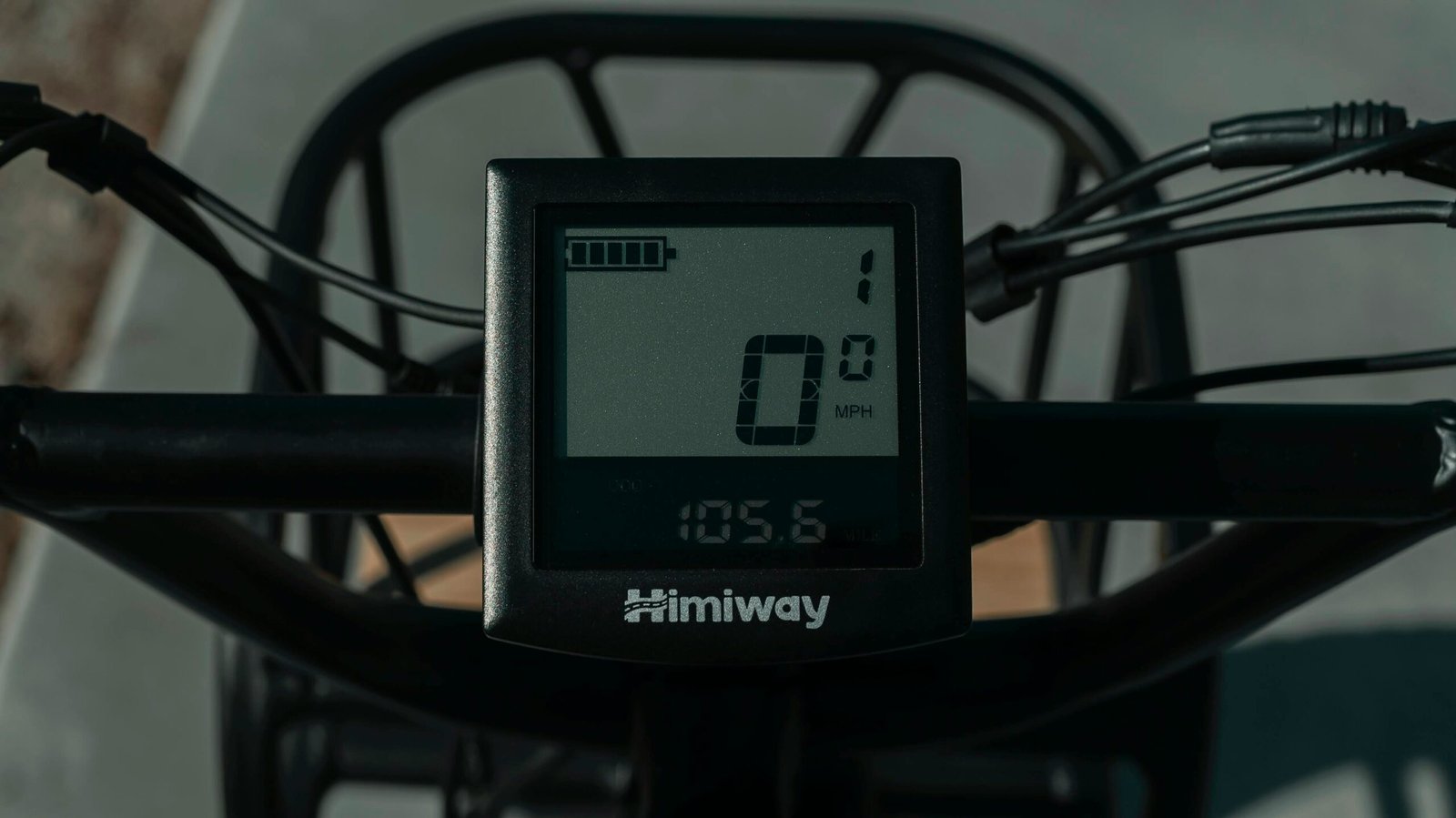How to Identify the LCD (Least Common Denominator)
Understanding the Concept of LCD
The Least Common Denominator (LCD) is a fundamental concept in mathematics, essential for performing arithmetic operations involving fractions. It represents the smallest common multiple of the denominators of two or more fractions. When adding or subtracting fractions with different denominators, the LCD serves as a universal denominator, enabling the conversion of fractions to a common base for straightforward calculations.
The significance of LCD in mathematical computations cannot be overstated. It ensures accurate and simplified operations by avoiding the complications that arise from working with fractions of differing denominators. For instance, when handling the fractions 1/4 and 1/6, their LCD is 12, turning them into equivalent fractions of 3/12 and 2/12 respectively. This method preserves the integrity of the values while making the operation seamless.
Historically, the concept of the Least Common Denominator has evolved alongside fraction computation methods. Early mathematicians, including ancient Egyptian scholars, tackled fraction operations through sophisticated means that laid the groundwork for the LCD method used today.
The practical applications of LCD extend beyond academic exercises. In real-world scenarios involving financial calculations, cooking measurements, or statistical data analysis, employing the LCD allows for precise and efficient arithmetic. For example, when splitting a bill among a group or adjusting ingredient quantities in a recipe with fractional measurements, using the LCD simplifies these tasks.
It is important to distinguish between the terms LCD and Least Common Multiple (LCM), as they often cause confusion. While the LCD relates specifically to fractions and their denominators, the LCM applies to any set of integers. The LCM is the smallest number that is a multiple of two or more integers. Using the earlier example, the LCM of 4 and 6 is 12, which coincidentally is also their LCD in this context, but the two concepts are applied differently.
Clear differentiation can be illustrated through examples. Considering the numbers 3 and 5, their LCM is 15, but they do not have an LCD since they are not denominators of a fraction. Conversely, for the fractions 1/4 and 1/6, while their LCD is 12, the concept of LCM becomes irrelevant without the context of fractions.
Methods for Finding the LCD
Determining the Least Common Denominator (LCD) can be approached through various methods, each suitable for different scenarios. Understanding these methods ensures accurate and efficient calculations. Here, we will explore three primary techniques: listing multiples, using the prime factorization method, and the division method. Each has its own strengths and weaknesses, which will also be discussed.
Listing Multiples
One straightforward method to find the LCD is by listing the multiples of the given numbers until a common multiple is identified. For example, to find the LCD of 3 and 4, list the multiples as follows:
Multiples of 3: 3, 6, 9, 12, 15, 18, …
Multiples of 4: 4, 8, 12, 16, 20, …
The first common multiple is 12, hence the LCD for 3 and 4 is 12. This method, while intuitive, can be time-consuming for larger numbers. It’s best suited for small, easily manageable numbers.
Prime Factorization Method
The prime factorization method involves breaking down each number into their prime factors. For instance, to find the LCD of 8 and 12:
Prime factors of 8: 2 × 2 × 2
Prime factors of 12: 2 × 2 × 3
Identify the highest power of each prime that appears in the factorizations. Here, the highest powers are 2³ and 3. Multiply these together: 2³ × 3 = 8 × 3 = 24. Therefore, the LCD of 8 and 12 is 24.
This method is precise and effective for larger values. However, it requires a good understanding of prime numbers, which might complicate it for some learners.
Division Method
The division method is particularly useful for finding the LCD of more than two numbers. Arrange the numbers in a row and repeatedly divide by their common prime factors:
Example: Find the LCD of 8, 12, and 16.
Step 1: Divide by 2 → 4, 6, 8
Step 2: Divide by 2 → 2, 3, 4
Step 3: Divide by 2 → 1, 3, 2
Step 4: Divide by 3 → 1, 1, 2
LCM: 2³ × 3 = 24
This method is efficient for larger groups of numbers but can be less intuitive. It may require more time and effort to master compared to the previous methods.
To optimize your process in finding the least common denominator, select the method that best fits the numbers involved. Avoid common pitfalls such as skipping a prime factor or ending the division process too soon. Each of these methods has distinct advantages, and recognizing when to apply each will significantly enhance your mathematical proficiency.
Applying the LCD in Problem Solving
The Least Common Denominator (LCD) is an instrumental concept in various mathematical operations, particularly when dealing with fractions and rational expressions. Identifying the LCD is pivotal for ensuring accuracy and simplifying complex equations. This section delves into practical applications, demonstrating the utilization of the LCD through worked-out examples. Here, we will consider adding and subtracting fractions, solving equations with fractions, and handling intricate rational expressions.
To illustrate, let’s start with adding fractions. Consider the fractions 1/4 and 1/3. To add these effectively, one must first determine the LCD of 4 and 3, which is 12. Thus, we convert the fractions to have a common denominator of 12: (1/4) becomes (3/12) and (1/3) becomes (4/12). Consequently, the sum is (3/12) + (4/12) = 7/12. Here, the use of the LCD ensures that the fractions are correctly aligned, yielding an accurate result.
Similarly, in subtracting fractions, the principle applies. Take 5/6 and 1/4. The LCD for 6 and 4 is 12. By expressing these fractions with a denominator of 12, (5/6) converts to (10/12) and (1/4) becomes (3/12). Performing the subtraction: (10/12) – (3/12) results in (7/12). Again, accurate identification and usage of the LCD streamline the process, providing a reliable answer.
Moving to equations with fractions, consider the equation (1/2)x + (1/3) = 5. To clear the fractions, identify the LCD for 2 and 3, which is 6. Multiply each term by 6 to obtain 3x + 2 = 30. Solving for x, we get x = 28/3. This method illustrates how using the LCD can simplify equations, making them more manageable to solve.
For more complex rational expressions, such as (2x/5) – (3/10), the LCD for 5 and 10 is 10. Rewriting the expressions as (4x/10) – (3/10) simplifies to (4x – 3)/10. The LCD’s role is crucial in standardizing terms, which not only eases computation but also aids in grasping the overall structure of the problem.
By consistently applying the LCD, whether in basic fraction operations or more advanced algebraic expressions, one ensures precision and clarity, ultimately leading to correct results. Effective identification and application of the least common denominator are fundamental skills in problem-solving, fostering a deeper understanding and capability in mathematical tasks.
Tools and Resources for Learning and Teaching LCD
In the realm of mathematics education, a plethora of tools and resources are available to aid in the understanding and teaching of the Least Common Denominator (LCD). Educational websites such as Khan Academy and Purplemath offer comprehensive lessons and practice problems dedicated to the concept of LCD. These platforms provide step-by-step instructions, allowing both students and educators to grasp the foundational principles and applications of LCD effectively.
Interactive calculators, which are accessible online, serve as invaluable aids. Websites like Calculator Soup and Math is Fun host free LCD calculators that not only solve for the Least Common Denominator but also illustrate the process. By engaging with these tools, learners can visualize the steps involved in determining the LCD, thereby solidifying their comprehension through experiential learning.
Mobile applications further enhance accessibility to LCD resources. Apps such as “Mathway” and “Photomath” allow users to solve LCD problems on-the-go by simply inputting the fractions, making them ideal for both review and study in various settings. These apps often include detailed explanations, ensuring that users understand the methodology behind the answers provided.
Traditional resources such as textbooks and worksheets remain indispensable, especially in classroom settings. Textbooks from publishers like Pearson and McGraw-Hill often contain sections dedicated to LCD, complete with exercises that reinforce the topic. Educators can also leverage printable worksheets from websites like Teachers Pay Teachers, which offer a diverse collection of targeted practice problems designed to enhance student engagement and proficiency in identifying the LCD.
For additional support, online communities and forums such as Stack Exchange and Reddit’s math subreddit offer interactive spaces where learners and educators can pose questions and share insights. These platforms foster collaborative learning and provide access to a broad spectrum of expertise, making them excellent avenues for seeking clarification and furthering mathematical understanding.
Ultimately, by utilizing a blend of these resources, students and educators alike can deepen their knowledge and improve their teaching strategies regarding the Least Common Denominator, leading to more effective learning outcomes.







